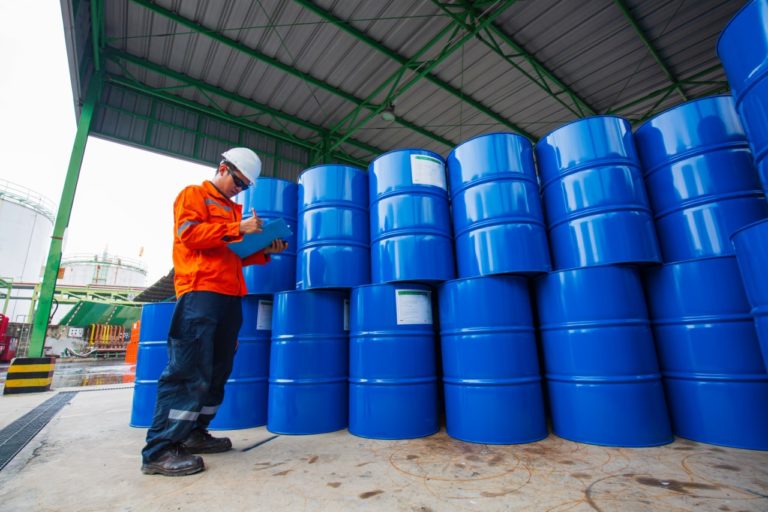The plastic fuel tank is essential in various industrial sectors, standing out for its adaptability and environmental benefits. In this article, we will thoroughly explore the unique features of this tank, evaluate its advantages and disadvantages, and discuss its various applications. Join us in this detailed analysis to understand how this tank can optimize your operations.
Features of plastic fuel tanks
Plastic fuel tanks, primarily made from high-density polyethylene (HDPE), are known for their lightweight and exceptional chemical resistance. These characteristics make them ideal for storing and transporting fuel, since they do not corrode like metal tanks. Its molded design allows the creation of complex shapes, optimizing space and adapting to various industrial configurations. Additionally, HDPE provides an effective barrier against fuel vapors, minimizing evaporative emissions.
Advantages and Disadvantages of a plastic fuel tank
When considering a plastic fuel tank for industrial applications, it is crucial to analyze both its strengths and limitations. This section details the pros and cons that may influence the decision to implement this solution in specific environments.
Advantage:
- Light weight: Plastic fuel tanks are significantly lighter than metal ones, making them easier to transport and install, which translates into savings in logistics and labor.
- Corrosion Resistance: Plastic does not corrode upon exposure to fuels, eliminating problems associated with rust and extending tank life.
- Efectivity cost: Plastic tanks are generally less expensive to manufacture and maintain, making them an attractive economic option.
Disadvantages:
- Heat and Fire Resistance: Plastic fuel tanks do not tolerate extreme heat well and pose risks in fire situations as they can melt or warp.
- Permeability: Although these types of tanks have improved in this regard, they can still be more permeable than metal tanks, which could pose challenges in complying with certain environmental regulations.
- Durability in Extreme Conditions: They are more vulnerable to damage from strong impacts and adverse conditions compared to their metal counterparts.
This comprehensive assessment helps to better understand in which situations a plastic fuel tank may be the most appropriate option and when alternative materials may be required.
Plastic Fuel Tank: Applications and Uses
Plastic fuel tanks have revolutionized various sectors due to their adaptability and superior qualities in specific environments. In agriculture, for example, these tanks are essential for the safe and efficient transportation of liquid fertilizers and pesticides. Its resistance to corrosion against aggressive chemicals guarantees the integrity of the transported products, protecting both the quality and safety of the crops.
In chemical industry, plastic fuel tank is essential for storage of solvents and acids. Compared to metal containers, they offer a significant advantage by minimizing the risk of cross-contamination and the possibility of structural failure due to corrosion. This reliability makes them a preferred choice in environments where product integrity and safety are of utmost importance.

Furthermore, in the energy field, these tanks play a crucial role in fuel storage at service stations. Its ability to reduce evaporative emissions not only meets environmental regulations, but also improves operational safety by minimizing the risk of fires and explosions. This combination of features makes plastic fuel tanks an ideal choice to ensure safe and efficient storage of fuels in various industrial applications.
Comparison with other materials
In comparison with the steel tanks and aluminum, the plastic fuel tank presents a number of distinctive advantages and particular limitations. The inherent lightness of plastic tanks is one of their main advantages, as it significantly reduces operating costs associated with transportation, handling and installation.
On the other hand, the corrosion resistance of plastic tanks is a key quality that distinguishes them from their metal counterparts. This resistance makes them ideal for the storage of a wide range of chemicals and fuels, protecting both the integrity of the stored materials and the durability of the tank itself. In environments where stored products are highly corrosive, plastic tanks can offer considerably longer shelf life compared to metal tanks.
However, it is important to note that plastic tanks may have limitations in certain extreme conditions, such as high temperatures or intense fire situations. In these scenarios, metal tanks may be preferable due to their greater heat resistance and ability to withstand extreme conditions without warping or melting.
Do you need advice?
At Perez Precision Works, we understand that selecting the right fuel tank can be a challenge. Our experts are here to help you make the best decision based on your specific industrial needs. If you have questions about which material or design is most suitable for your project, do not hesitate to contact us.
Contact us today and take your projects to the next level!



